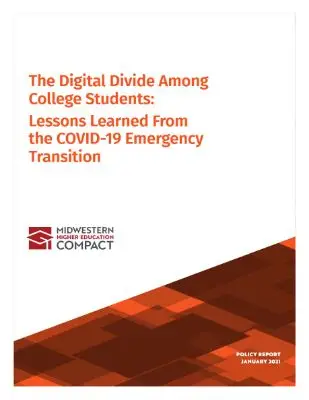The Digital Divide Among College Students: Lessons Learned From the COVID-19 Emergency Transition
This report examines the meaning and impact of the digital divide — the gap between those who can and cannot access the Internet — on college students during the COVID-19 emergency shift to remote learning. The assessment is based on several national surveys conducted in the spring or summer of 2020, as well as results from a large-scale survey the authors conducted at Indiana University and The Ohio State University during the same time period.
Key findings of the report focus on:
- Prevalence of inadequate technology
- Inadequate technology and student success
- Institutional and state approaches
Policy options discussed in the report include:
- Supporting community and private sector engagement and training
- Leveraging state administration to strategically allocate indirect federal funding to support technology access and broadband programs
- Investing directly in broadband through programs that incentivize or match private and local investment.
- Incentivizing or supporting colleges in efforts to provide tablets, laptops, and wireless access to students who would otherwise have inadequate technology

